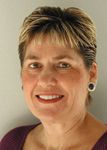- Case-Based Roundtable
- General Dermatology
- Eczema
- Chronic Hand Eczema
- Alopecia
- Aesthetics
- Vitiligo
- COVID-19
- Actinic Keratosis
- Precision Medicine and Biologics
- Rare Disease
- Wound Care
- Rosacea
- Psoriasis
- Psoriatic Arthritis
- Atopic Dermatitis
- Melasma
- NP and PA
- Skin Cancer
- Hidradenitis Suppurativa
- Drug Watch
- Pigmentary Disorders
- Acne
- Pediatric Dermatology
- Practice Management
- Prurigo Nodularis
- Buy-and-Bill
Article
Modifying your coding
Most dermatology billers are relatively comfortable (or should be) with the various modifiers commonly used by dermatologists (e.g., -24, -25, -26, -58, -59, -76, -79, -GA, GY, and -TC. Less familiar are modifiers -50 and -52.

Modifiers were not in existence until computers became the standard for billing. A modifier is nothing more than a way to override an edit programmed by the insurance carrier. If modifiers are used correctly, they will (most of the time), get the claim paid appropriately without unnecessary denials.
I've selected a few questions regarding these modifiers and some guidelines on their use which should help billers use them appropriately.
New in New Mexico
A: First, welcome to dermatology. I have been in the field now for 35 years and have loved every minute of it. I think the skin is absolutely the most interesting of all the organ systems (our largest one, you know). I can't imagine having worked in a more exciting and fulfilling specialty!
Your first mistake was using modifier -50. It is not appropriate for your scenario. Actually, there is only one CPT code regularly billed by dermatologists that requires modifier -50. Let's do a basic review of the modifier so you get the entire picture.
The definition: -50 bilateral procedure: Unless otherwise identified in the listings, bilateral procedures that are performed at the same operative session should be identified by adding the modifier "-50" to the appropriate five digit code or by use of the separate five digit modifier code 09950.
The rules 1. This is a surgical modifier. (Most surgical dermatology services start with a "1.")
2. The modifier is only used in conjunction with certain CPT codes.
a. These are procedures which are inherently bilateral based on their description or the term "bilateral" is included in the CPT description.
b. Payment for these procedures reflects the additional work required for a bilateral procedure.
c. A procedure which is bilateral in nature should be reported on a single claim detail line with one unit indicated in block 24G. (Not two units; only one!)
d. Payment will be made at 150 percent of the allowed amount.
e. If the procedure is performed on only one side of the body, do not use procedure code modifier -50.
f. There are limited examples of such services in dermatology. The most common and frequently used code in dermatology is 29580 (Application of an Unna Boot). Following is an inclusive list of those services that require the use of modifier -50. These are procedures that are allowed at 150 percent of the fee schedule allowance when they are performed bilaterally.
The CPT codes included under the 150 percent payment rule for dermatology are: 15820, 15821, 15822, 15823, 15824, 15825, 15826, 15828, 15829, 19020, 19030, 19100, 19101, 19102, 19103, 19110, 19112, 19140, 19160, 19162, 19180, 19182, 19200, 19220, 19240, 19316, 19318, 19324, 19325, 19328, 19330, 19340, 19342, 19350, 19355, 19357, 19361, 19364, 19366, 19367, 19368, 19369, 19370, 19371, 19380, 19396, 19499, 23065, 24065, 25065, 27040, 27323, 27613, 29580, 36470, 36471.






